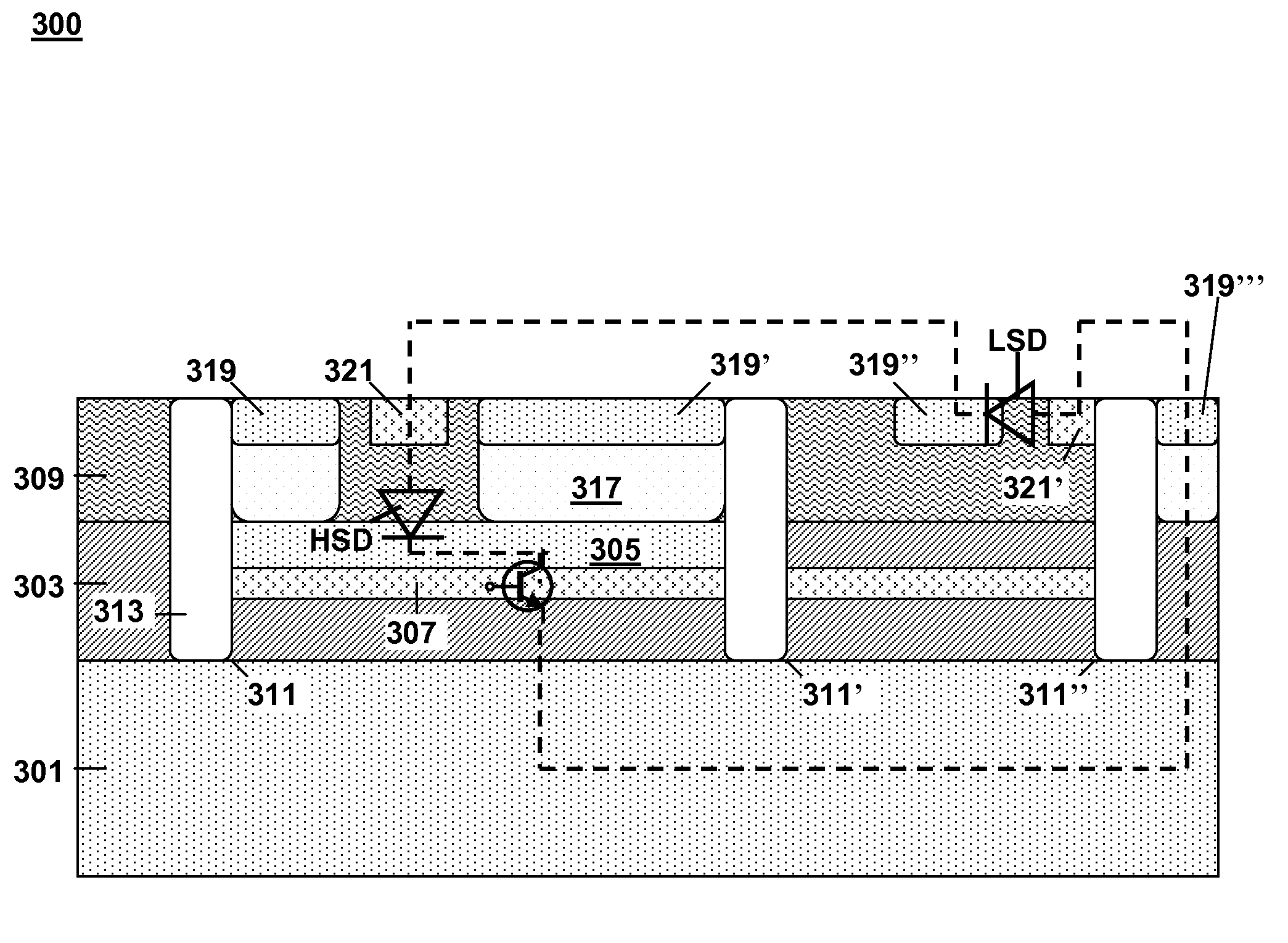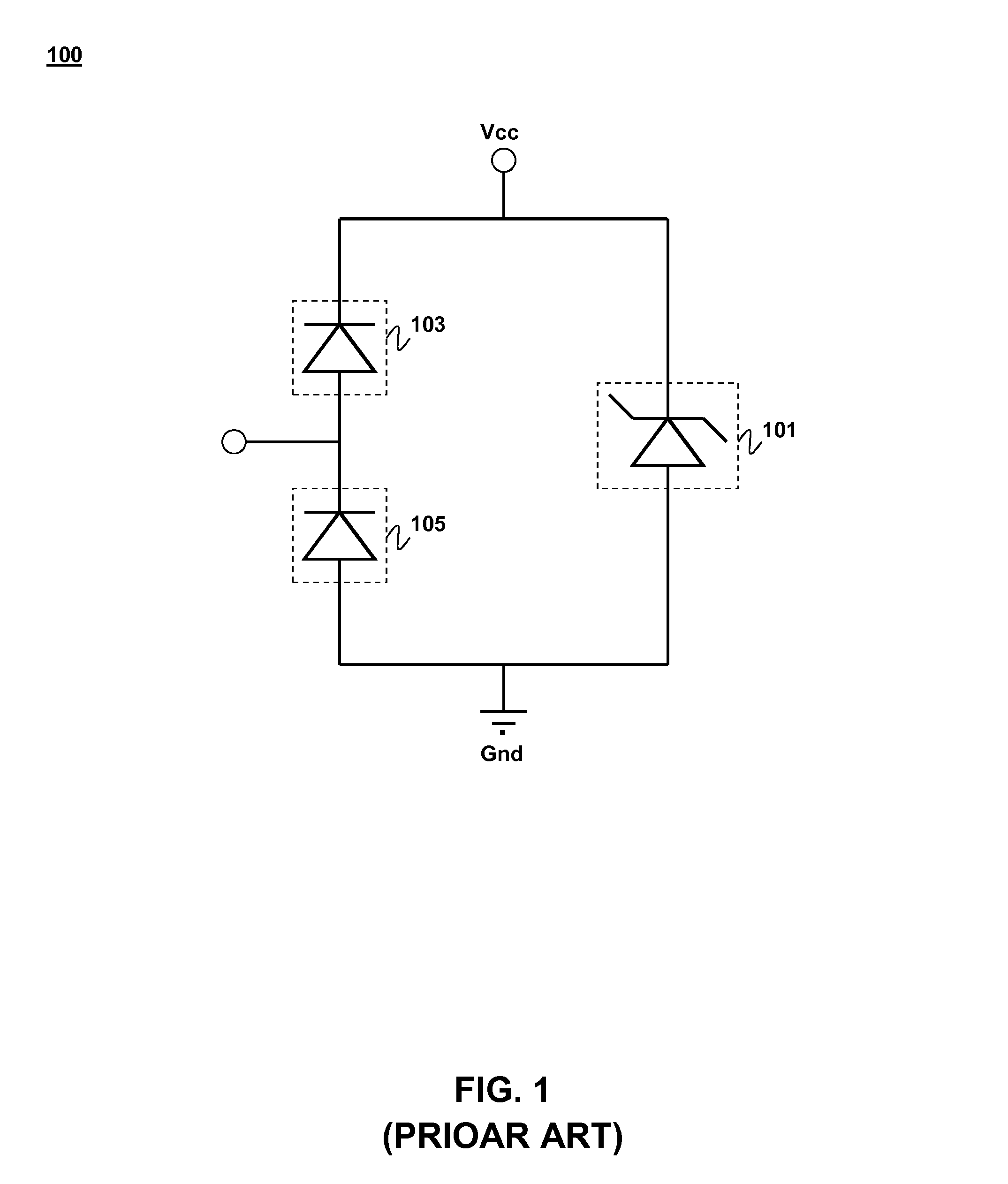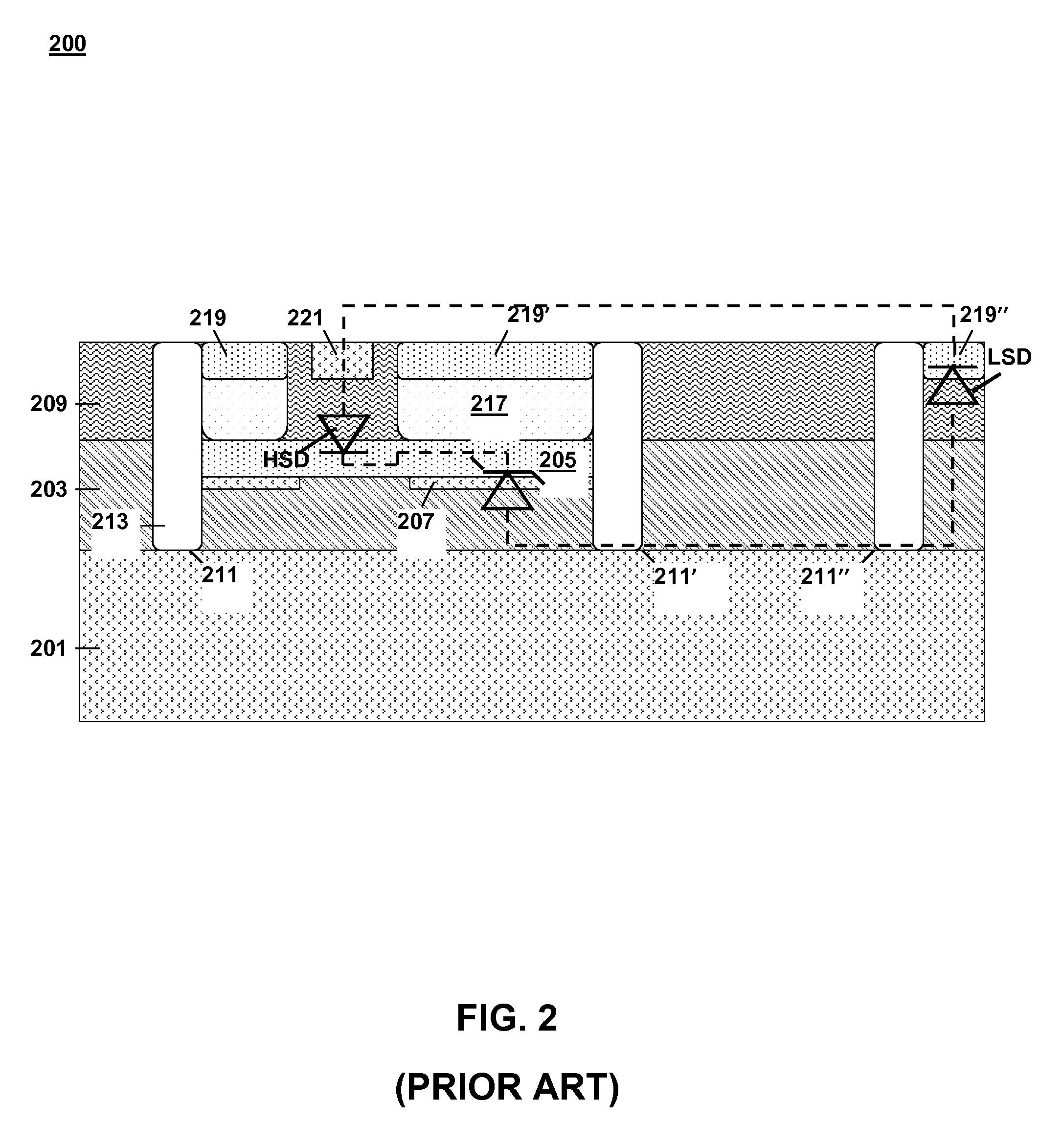Low capacitance transient voltage suppressor (TVS) with reduced clamping voltage
a transient voltage suppressor and low capacitance technology, applied in the field of integrated circuits, can solve the problems of unexpected and uncontrollable high voltage hitting the circuit, and achieve the effects of improving the clamping performance of an n+ source, low capacitance, and easy integration of steering diodes
- Summary
- Abstract
- Description
- Claims
- Application Information
AI Technical Summary
Benefits of technology
Problems solved by technology
Method used
Image
Examples
Embodiment Construction
Introduction
[0016]FIG. 2 is a cross-sectional schematic diagram illustrating a conventional transient voltage suppressor (TVS) device 200 in accordance with the prior art. This conventional TVS 200 behaves in accordance with the TVS 100 described above in the circuit diagram of FIG. 1.
[0017]The TVS 200 is formed on a heavily doped p+ semiconductor substrate 201 which supports a first epitaxial layer 203 and a second epitaxial layer 209. The first epitaxial layer 203 is a lightly doped p− layer. This first epitaxial layer 203 may be doped with Boron having a concentration on the order of 1015 / cm3. The second epitaxial layer 209 is a very lightly doped p− layer. This second epitaxial layer 209 may also be doped with Boron, having an even lower doping concentration on the order of 1014 / cm3 or lower. Because the doping concentration of the second epitaxial layer 209 contributes significantly to the capacitance of both the high-side steering diode HSD and low-side steering diode LSD it i...
PUM
 Login to View More
Login to View More Abstract
Description
Claims
Application Information
 Login to View More
Login to View More - R&D
- Intellectual Property
- Life Sciences
- Materials
- Tech Scout
- Unparalleled Data Quality
- Higher Quality Content
- 60% Fewer Hallucinations
Browse by: Latest US Patents, China's latest patents, Technical Efficacy Thesaurus, Application Domain, Technology Topic, Popular Technical Reports.
© 2025 PatSnap. All rights reserved.Legal|Privacy policy|Modern Slavery Act Transparency Statement|Sitemap|About US| Contact US: help@patsnap.com



